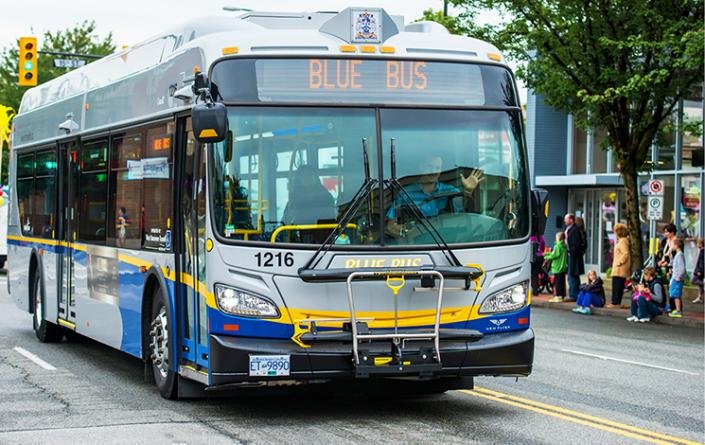How do you solve a problem like traffic?
It’s no secret that traffic congestion in West Van has worsened in recent years.
And so too have our greenhouse gas (GHG) emissions. Both the district’s 2016 Community Energy and Emissions Plan and the 2018 Official Community Plan note that transportation is a major contributor to local GHG emissions (41%) and has other detrimental impacts such as air pollution and noise.
Alternative forms of transportation offer the best way to solve both problems: reduce congestion and emissions. The district has long recognized this, from the 2010 Strategic Transportation Plan to the Mayor and Council’s latest Strategic Plan with its goals of improving transit options and improving the safety and appeal of active transportation.
Positive Voices supports initiatives that facilitate the greater use of transportation alternatives in West Vancouver. However, we have not made much headway toward realizing the necessary changes to make travel attractive in anything other than in single occupancy vehicles.
Rapid Transit
Improving public transit is the most obvious move. But given that West Vancouver is a small municipality with just 1.6% of the Metro Vancouver population, and limited resources, the main approach has been to build partnerships to support joint transportation solutions.
So North Shore Connects, which brings together the North Shore municipalities, and First Nations, successfully lobbied TransLink to commit to start building a traffic-separated Bus Rapid Transit (BRT) line within the next 5 years. The line will run all the way from Park Royal to Metrotown, in Burnaby.
Over the last few years there has been some progress, including the R2 RapidBus service between Park Royal and Phibbs Exchange. However, local opposition to the RapidBus service moving further west than Park Royal means bus service to Dundarave remains a slow option.
People in West Van lobbied against the RapidBus - then known as the B-Line - because of the belief that priority bus lane and the loss of some parking stalls would make traffic worse. In April 2019, District Council unanimously voted to veto the extension beyond Park Royal.
Renewing debate
That furore, and the politics around West Van’s Blue Bus - the only municipally-owned operator in the Lower Mainland - makes it difficult to even discuss new proposals for a rapid service extending across the main east-west corridor along Marine Drive.
Three years after the B-Line was cancelled traffic is evidently worse. A more efficient rapid bus service would clearly benefit communities from Ambleside and Dundarave, to the Western part of the municipality.
While Mayor Mary-Ann Booth thinks we should reconsider a rapid service in West Van, the Blue Bus workers’ union, the ATU Local 134, opposes the idea. It fears that passengers might switch, and trigger the loss of members’ jobs.
The trouble is: no other affordable transit option looks remotely likely to materialise.
While some people insist that we could get Skytrain, or some other light rail in West Van, you still need a dedicated transit crossing, and no new crossing of Burrard Inlet is planned in the next 10 years.
Vehicle Sharing
In the absence of a quick, viable transit option many non residents working in West Van, will resort to cars, if they have them. Others may just refuse to work here crippling businesses desperate for staff and reducing home care options, amongst other consequences.
Another, more cost-efficient alternative is sharing. A pilot e-bike share service is now in operation in West Vancouver and the other North Shore municipalities.
While not as effective as transit at removing many cars from our streets, car-sharing is a way to reduce individual transportation costs and costly parking requirements in new developments.
The Evo car-share scheme is currently available in North Van, and at Park Royal, but nowhere else in West Van. An expansion of the scheme would assist a lot of residents, especially young adults.
Local Housing
You can also reduce traffic congestion and GHG emissions by building affordable housing units - particularly rental - so that workers can live in West Vancouver.
You can improve uptake of transportation alternatives, by locating units along or near public transit and active transportation corridors.
By focusing on more units per land instead of large homes for wealthier members of cities, both congestion and worker shortages can be tackled at once.
Active Transportation
Active transportation - walking, cycling and other human-powered devices like skateboards and scooters - offers many benefits.
In addition to reduced GHG emissions more people switching to active transportation instead of driving will mean air quality improves, and there’s less noise pollution.
A key facet of livable communities, it improves our health and well-being, and leads to lower healthcare costs.
In a community like West Vancouver we have excellent places to walk, but challenges including hilly terrain; and far too many roads lacking sidewalks.
Electric Vehicles
Another transportation alternative - electric vehicles - produce no GHG emissions, and cost less to operate and maintain than gas-powered vehicles.
Of course electric vehicles do not reduce congestion.
E-bikes on the other hand present a realistic alternative for our hilly locale, though the fact that we have so few protected bike lanes is likely to temper interest.
This month an e-bike purchase incentive scheme may get the go-ahead on a trial basis, in conjunction with the other North Shore municipalities.
Along the lines of electric car rebates, the idea is to offer $1500 to low income individuals and $500 to residents below median income towards the purchase of an e-bike.
Read more about what we can do to tackle our transportation challenges.

